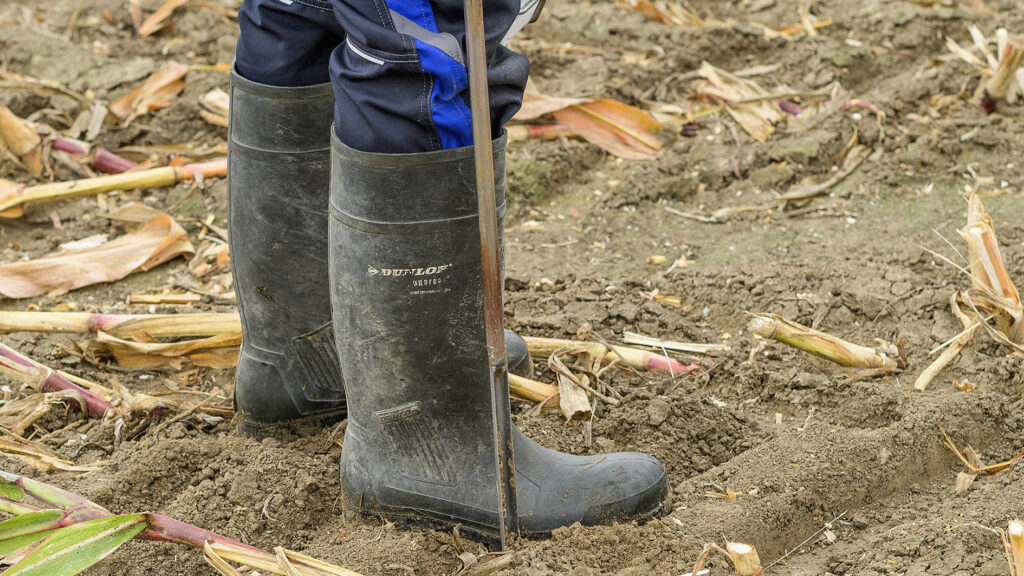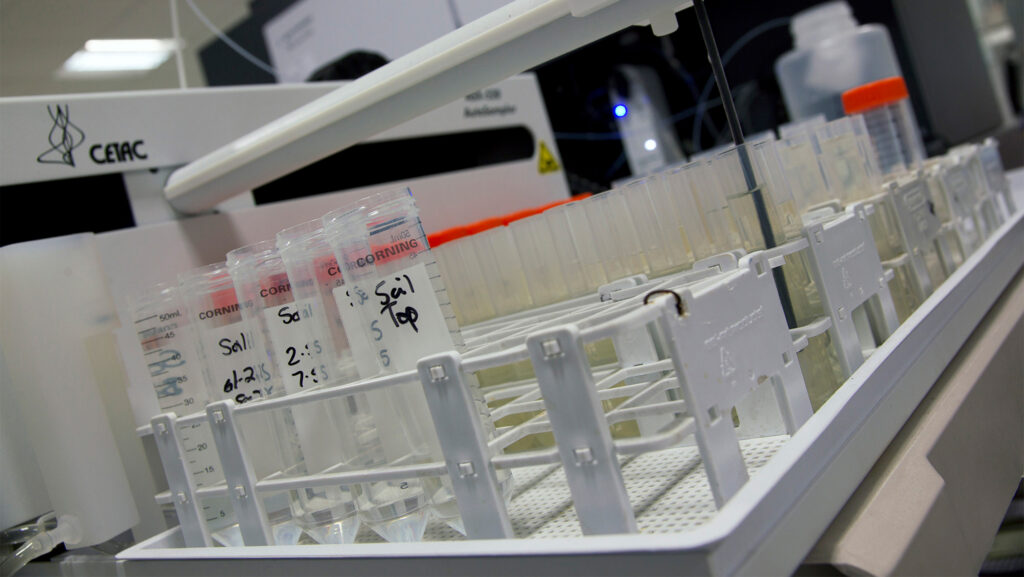Growers advised to test soils immediately post harvest
 © Eurofins Agro UK
© Eurofins Agro UK As combines begin to roll across the UK, growers are advised to carry out soil tests immediately post-harvest to calculate optimum fertiliser requirements ahead of planting this autumn.
Soil health specialist Shane Brewer, from laboratory group Eurofins Agro, suggests testing straight after harvest to help understand how the outgoing crop has taken up nutrients, and find out what is left available for the following crop.
“Regardless of what conditions are apparent after harvest, it is the best time to ascertain what impact the outgoing crop, and the conditions it has been grown in, have had on soil health,” explains Shane.
“It is vital to understand this to ensure soils can provide plant available nutrients to maximise the subsequent crop’s yield.
“This will help to reduce input costs, while improving plant available nutrients in the soil stock.”
Why test?
Flooding and waterlogging experienced throughout the UK earlier this cropping season has washed away reserves of nitrogen, phosphorus and other essential nutrients.
In addition, flooding has caused aerobic bacteria to be replaced by anaerobic bacteria, producing gases such as methane and nitrous oxide.
Reduced soil oxygen levels are also thought to have reduced earthworm numbers in some areas.
“Furthermore, it is expected that some soils now contain worrying levels of contaminants such as aluminium that could jeopardise future crop quality,” Shane says.

© Eurofins Agro
Available soil tests
Traditional tests that measure nitrogen levels go one step in helping to make decisions.
But for those looking for greater insight and the potential to manage land with fewer synthetic inputs, a more detailed analysis is crucial.
Shane points to the firms’ “Fertilization Manager” test, which provides detailed analysis of common-plant-available nutrients, macro and micronutrients.
“This includes the physical, biological and chemical attributes of the soil, as well as its carbon properties,” he says.
Shane suggests that while a test of this type will offer significant data to help calibrate inputs, there is also a way to understand how bacteria and other soil life stand to benefit and thrive if the right nutrients are added.
The firm also offers a “Soil Life Monitor” test, which is growing in demand as farmers look to become more sustainable through the use of regenerative farming techniques.
“This test determines the total microbial biomass, fungi, bacteria and protozoa in soil samples.
“It also identifies physical characteristics such as pH and the quality of organic matter,” he says.
The monitor uses the phospholipid fatty acids (PLFA) method to measure the biological parameters of soil life.
“Fatty acids present in the cell membranes of living organisms are measured to obtain a fingerprint of soil life.
“This makes it possible to distinguish between fungi and bacteria by measuring the way PLFAs are degraded in soil, which provides a more accurate picture of what soil needs to thrive,” he says.
